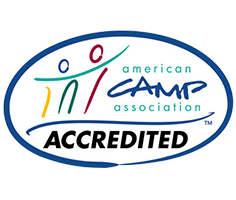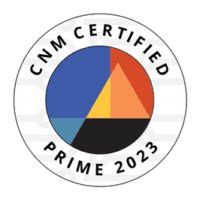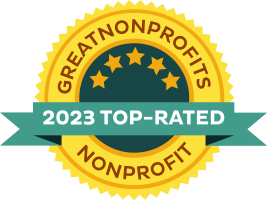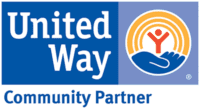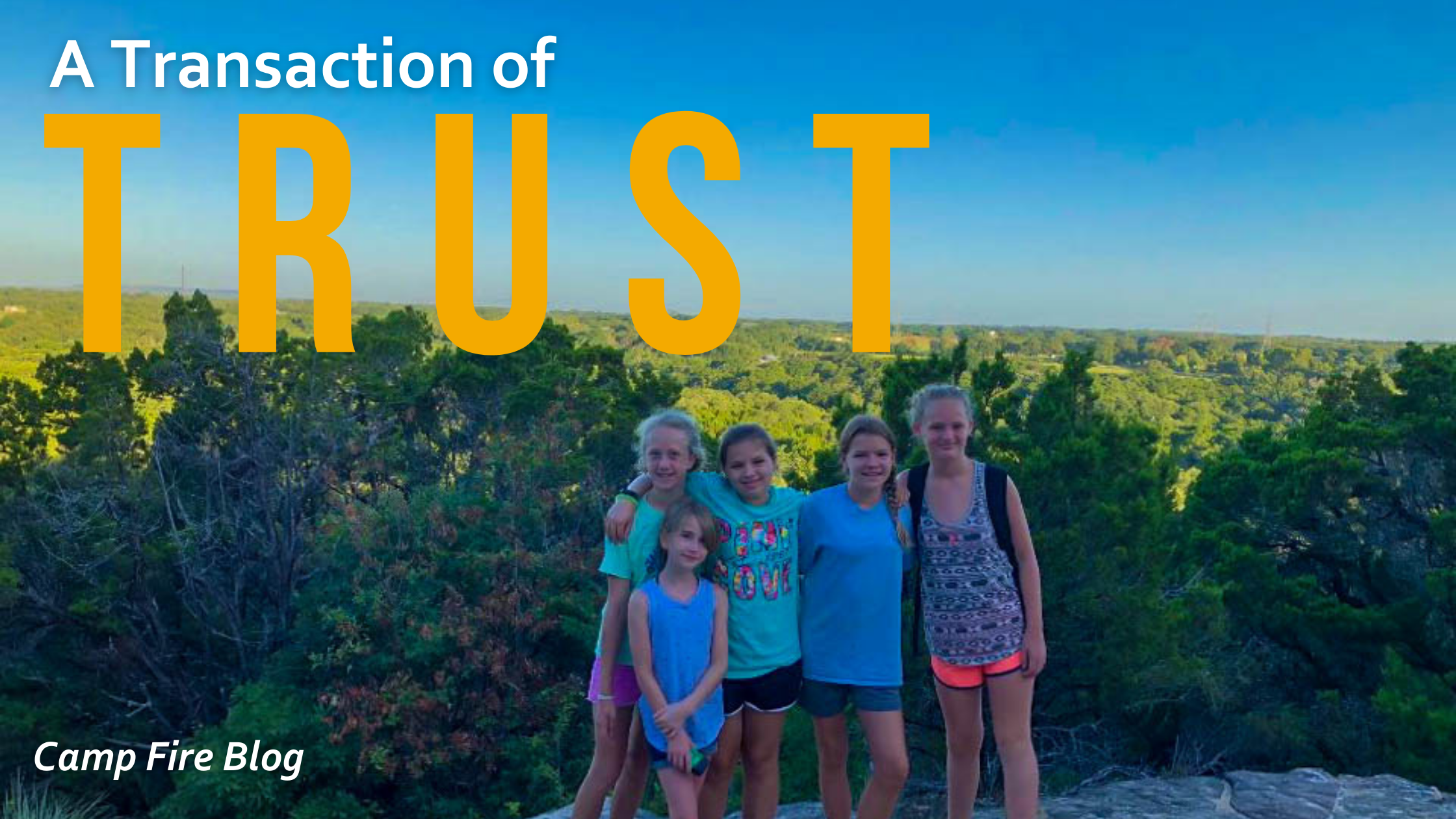
Contributor
CHRISTY JONES
Vice President of Marketing and Communications
I am a camp kid.

Christy age 7 (at camp!), center
The best part of my summer was arriving at camp with a tummy full of butterflies ready to swoosh down a slide to the cheers and high fives of my waiting camp counselors. I knew for the next 14 to 28 days I was going to be swimming, hiking, water skiing, jumping, making friendship bracelets, camping, meeting new friends and growing as a person. I literally and figuratively grew up at camp. More than 10 years of my life was actively intertwined with those summer experiences. Even more as I look back on those skills and traits that still serve me today.
As a camp kid you see the fun, the freedom, the adventure and joy. It is the time to break free from your parents, find your voice and flex the muscles of independence. Camp is important.
I am a camp parent.
When it came time to walk my own freshly-minted first grader into camp I had a tummy full of butterflies and a heart full of questions. Was he too young, how would he navigate making new friends, will his counselor be nice, will they keep him safe? “Camp is important,” I reminded myself.
The reality I never understood as a child is that the entire “going to camp” process for a parent is a transaction of trust. I am entrusting this entity with an irreplaceable treasure. In return, I expect my child to be protected, cared for, challenged and returned to me more independent, kinder, wiser and a bit dirtier (it is camp after all). Yet I also expect my child to return to me safe.
I’ve wrestled with how to quantify this transaction. How can I, as a parent and camp advocate, provide some insight into how to navigate this transaction? I have been on all sides of this, after all.
From my point of view, it lies in how the camp works to build trust both with their policies and their “heart”.
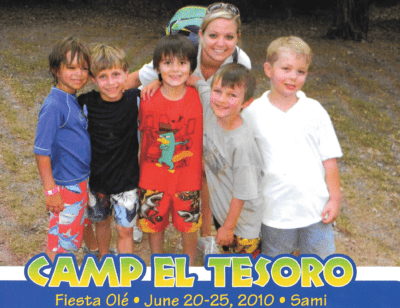
Christy’s son age 6 (at camp!), second from right
 Building Trust with Policies.
Building Trust with Policies.
Holding a current certification by the American Camp Association is a good indicator that a camp takes the safety and protection of its campers seriously. There are more than 200 safety measures a camp must meet to maintain certification. If not certified by ACA, find out why not. Does the alternate certification come from an internal or external entity? If internal, how is it validated? Lack of certification or an internal rubber-stamped certification is a huge Red Flag
Annual background checks are basic building blocks of creating a safe and trusted environment. Everyone who has the possibility to encounter your child at camp should have a current and clear check done by the organization. Ask. If they say, “Most of our staff. . .” find out what they mean. Some may have more extensive checks on file. If they won’t answer you, laugh it off or try to avoid the question – Red Flag

How do ACA standards exceed state licensing requirements?
The American Camp Association is the only nationwide accrediting organization and standards focus on health, safety, and risk management practices.
ACA goes beyond basic requirements for health, cleanliness, and food service into specific areas of programming, including camp staff from director through counselors, emergency management plans, health care, and management. ACA applies separate standards for activities such as waterfront, horseback riding, and adventure and travel.
Accreditation indicates to the public that the camp administration has voluntarily allowed a peer review process in which its practices are compared to standards established by professionals and is evidence your camp meets industry accepted and government recognized standards.
Rule of Threes is a term well-known in camp circles. It means that there are never one-to-one encounters with staff and campers as well as camper and camper encounters. There should never be one counselor alone with one camper. If for some reason this happens, the counselor is trained to report it immediately. Ask your prospective camp about this. If they don’t know what you mean – Red Flag

Abuse Prevention, Reporting and Safety Training should all take place during in-service and pre-camp training. Find out what staff are trained to look for, how does the reporting structure look and who leads the training. This blog addresses the training philosophy of Camp Fire programs and speaks to the forthright and direct approach camps and trainers should take with staff and CITs. If the camp you are interested in cannot address this clearly – Red Flag
Supervision is important for your camper, but also find out what type of counselor supervision is in place. Who are the lead staff members randomly checking in with the cabin to make sure counselors are following procedures such as monitoring shower times, bathrooms, transition times, free time, and night activities? This structure should be easily discussed, and questions answered. No planned supervision or the answer is “the director” that is a Red Flag

 Building Trust with Heart.
Building Trust with Heart.
Kids before Camp. There are many entities out there in the business of camp. They focus on the biggest and best toys. They seek thrills and big names. While this is not entirely bad, it can create an environment where leadership or staff lose sight of the fact, they are there for kids. To serve and build a person, not a place. This is a “gut check” but look at the leadership of the camp. Are they authentic in how they present themselves and the camp? Are they comfortable in their own skin? Do they take the time to meet and discuss the needs and concerns of families and youth? Do they appear to “use” the experiences at their camp to benefit the camp vs. enrich the lives of the campers? If the business of camp is more important than the campers and their families – Red Flag
Appropriation. At the heart of this issue can be a disregard to acknowledge the truths of others. If a camp is committed to their appropriation of native cultures and identities, find out how they have worked with local indigenous leaders. How have they, or are they, working to move away from iconography and terminology that is known to be offensive? Why does this matter? If a camp organization is not willing to listen when others say the camp practices hurt them, it is a Red Flag
Concerns & Complaints. What?! You mean every session, every summer doesn’t run perfectly 100% of the time? Unfortunately, not always. But how a camp responds to concerns and complaints shows a lot about their character and (refer to items above) where they place their priorities. While you may not always agree with HOW a camp handles the concern they should address it. But if leadership laughs off or ignores a concern about safety or staff interactions trying to tell you “that’s just how camp is” that can be serious Red Flags
 Final Note on Transparency & Trust.
Final Note on Transparency & Trust.
If you haven’t been to camp, there is a lot about the experience that may seem foreign and a bit unsettling. Ultimately, the way in which a program and staff are transparent with their procedures, training, policies, humanity and in responding to your questions should be the primary factor in this transaction of trust.
The American Camp Association has additional in-depth resources for locating and evaluating the safety of camps.
Ready for camp? Learn more about Camp Fire First Texas Overnight Camp and Day Camp options.

